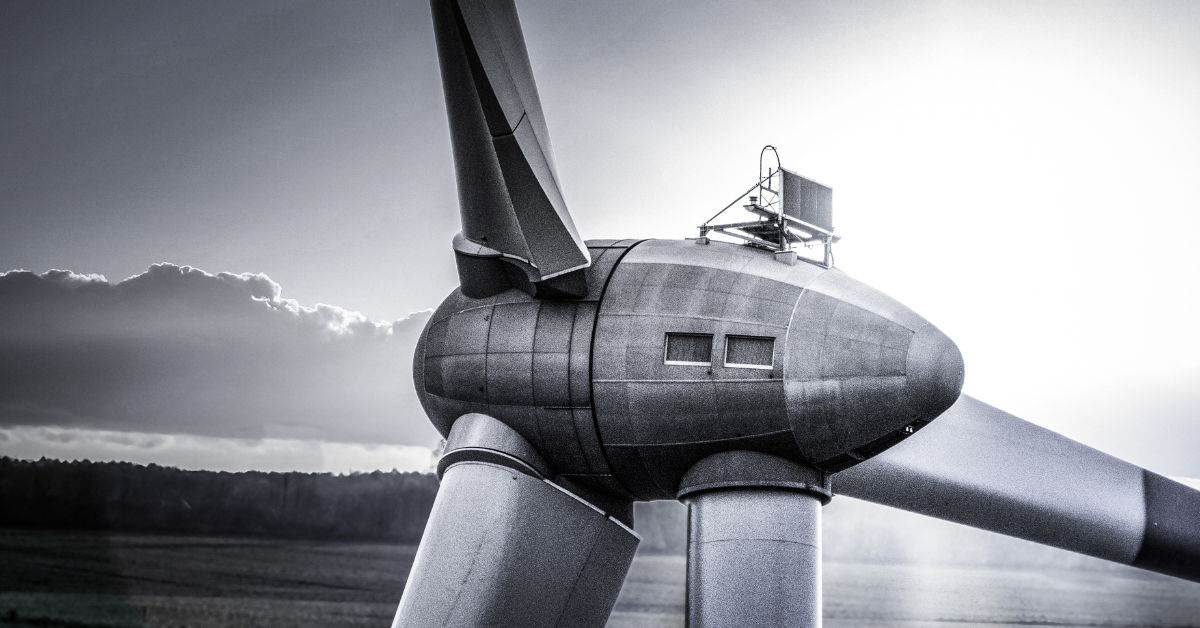
Winds of change: offshore edition
Opinions expressed whether in general or in both on the performance of individual investments and in a wider economic context represent the views of the contributor at the time of preparation.
Executive summary: Expect more offshore wind farms. They are more efficient, have a reduced environmental impact and can be scaled more effectively relative to their onshore counterparts. As a result, the offshore wind industry should grow at between two and four times the rate of onshore. Falling turbine costs, technological improvements and geopolitical considerations mean that offshore installations could account for 35% of all global renewables investment through to 2030. Many projects are already underway, particularly in Europe, but progress will not be linear. For the offshore wind industry to develop fully, permitting processes need to improve. Given that the market structure is oligopolistic (ex-China), the scope for the major players to earn attractive returns over time looks compelling. Vestas stands in a particularly strong position, as the only pure-play turbine manufacturer of meaningful scale.
To behold an offshore wind turbine, as your author did recently, is an impressive sight. The largest have blades as long as Big Ben is tall and gear boxes bigger than the average house. A single sweep of the biggest turbine currently on the market (GE’s Halide-X) is enough to power one household in the UK for more than two days (per information provided by the National Grid). The annual energy generated by such a turbine can save up to 52 million metric tonnes of carbon dioxide annually, the equivalent to the emissions generated by 11,000 vehicles in a year.
It is five years since we last wrote a dedicated theme piece on the case for wind. During that time, its growing strategic importance as a source of energy has only become more evident. Consider that global capital expenditure on wind and solar assets was greater than investment in new oil and gas wells for the first time ever in 2022. Correspondingly, the combined power from wind and solar overtook natural gas for the first time in the EU last year. Looking forward, projected renewable capacity additions of ~2500GW over the next five years would match those of the last twenty (data from Rystad Energy, Ember Analytics and JP Morgan, respectively).
As a reminder, renewable energy has very low marginal costs and is virtually unlimited by physical constraints. The only real constraint is how quickly it is possible to invest and build. Wind, in particular, is cheap and abundant. It produces no carbon dioxide, no greenhouse gases and no hazardous waste. Unlike coal or nuclear, wind does not consume large amounts of water, which itself is becoming a scarce resource. A standard turbine will generate around 240MW of energy during its 20-year operation, sparing the environment the impact of a net volume of ~230,000 tonnes of carbon dioxide that would be produced were a coal-fired power station to generate an equivalent amount of energy (per Bloomberg New Energy Finance, or BNEF).
Looking forward, we believe that the future will not be simply about wind in general, but offshore wind in particular. The advantages (relative to onshore) are threefold: offshore turbines are more efficient, have a reduced environmental impact and can be scaled more quickly, owing to the available space in which to build them.
Offshore wind farms generate electricity from wind blowing across the sea. Here, wind typically reaches a higher and more constant speed than on land, due to the absence of barriers. Furthermore, offshore breezes can be strong in the afternoon, matching the time when people are using the most electricity. As a result, higher wind speeds and consistency in direction means offshore installations require fewer turbines to produce the same amount of energy as onshore wind farms. Oceans also provide the perfect location to build wind farms in terms of scale and openness. More wind farms being built means more clean, sustainable energy can be produced. Being far from the coast, offshore turbines are – by definition – located away from nearby populations.
Governments across the world are embracing offshore. BNEF describes it as “the fastest growing green technology” and projects c20% annual growth through to 2030, from a starting year of 2020. A forecast seven-fold increase in capacity over this period would be more than double that assumed for onshore build. The assumptions made by Wood Mackenzie, another consultancy, are even more ambitious, calling for a growth rate in offshore wind some four times the rate of that of onshore. Offshore could, on its forecasts, account for 35% of all global renewables investment through to 2030, up from just 6% in 2020.
The industry has certainly come a long way from when the first offshore farm installed at Vindeby in Denmark in 1991. How has such expansion become possible? The best answer lies simply with Moore’s Law. As the industry has scaled, costs have fallen. Better (and more reliable) turbines with greater capacity now exist relative to a generation ago. When combined with more robust cables and transformers, this can be a very powerful proposition. Larger turbines typically reduce per-megawatt project costs. Consider that the average offshore wind turbine capacity installed in 2021 was 7.4MW, significantly higher than 3.3MW in 2011 (per the Department of Energy). Looking forward, all the world’s leading turbine manufacturers have announced that models in the range of 13–15 MW will be available for installation from next year. Correspondingly, the levelized cost of offshore wind energy – a key industry metric – will have fallen by roughly three times over the period 2011-2024.
Technological progress is also boosting the outlook for offshore wind. Until recently, turbines have been installed onto bottom-fixed foundations that are grounded in waters with typical depths of up to 50 meters, requiring a relatively shallow continental shelf. Newer, floating foundations, however, can be installed irrespective of the terrain that lies below and may become viable for water depths of 1,000 meters and beyond, an advancement that increases the viable sea area for offshore wind by a factor of five (per McKinsey). Locating wind farms further offshore can also reduce visual pollution, provide better accommodation for fishing and shipping lanes and reach stronger and more consistent winds. One project developer, Equinor, sees floating wind farms as the “next wave” in renewable energy and believes they can achieve profitability by 2030 through scale and industrialisation.
Look further ahead and other innovations could also make the case for offshore wind even more compelling. Consider the benefits that multi-purpose interconnectors (MPIs) could deliver. Instead of individual wind farms connecting one by one to the shore, MPIs would allow clusters of offshore wind farms to connect all in one go, plugging into the energy systems of neighbouring countries and making it even easier to share clean energy between countries. In one future vision, “energy islands” will begin to appear. Think of these as state-of-the-art clean energy hubs. They could enable the connection of offshore wind to multiple countries via MPIs, while also serving as a platform for the production and delivery of green hydrogen. In this world view, excess offshore wind capacity would serve as an additional fuel source for hydrogen electrolysis.
To get a sense of what might be possible, look at the work underway in the North Sea currently. What was once a hub for oil, now may be one of the best places in the world to develop offshore. With an average wind speed of 10 metres per second, the North Sea is among the windiest locations on the planet. The relative shallowness of its seabed also makes it an ideal place to fix turbines. Already, the UK has the largest installed capacity of offshore wind in the world, with around 10GW in operation beyond its coasts. The Hornsea 2 site, located off the coast of Lincolnshire, spans 462 square kilometres and can power electricity for 1.4m households (per the National Grid). Hornsea 3 is already being built nearby. Planning permission may also be granted in the future for Hornsea 4.
Last year, the EU auctioned 25GW of offshore capacity in the North Sea, the largest annual amount to-date. Under plans released by Europe’s Governments, overall offshore capacity in the region could reach 300GW by 2050. Such a level would – theoretically – be enough to power all households across the Continent. Belgium, Germany and the Netherlands have already announced plans to connect their respective energy islands and a broader plan would see the “North Sea Wind Power Hub” connecting these countries’ offshore energy resources with those of Denmark, Norway and the UK. The Hub may be operational by the early 2030s, per Wind Europe, an industry body.
Offshore wind in not just a European phenomenon. As part of the Inflation Reduction Act, President Biden issued an Executive Order focused on expanding the offshore wind industry. The Departments of Interior, Energy and Commerce (DOI, DOE and DOC respectively) announced a combined goal to deploy 30GW of offshore wind in the US by 2030, while simultaneously creating tens of thousands of green energy jobs. America’s offshore wind pipeline rose 13.5% in 2022 relative to the prior year, per the DOE. A third major offshore wind farm project in the US recently received approval, in July. Elsewhere, offshore project development is active off the coasts of Korea and Japan, which have many similarities with the North Sea. Many other countries are exploring offshore wind too, including Azerbaijan, Brazil, Canada, Colombia, India, Oman, the Philippines, Sri Lanka, and Trinidad and Tobago.
It all almost sounds too good to be true. Readers should remember, however, that developing an offshore wind project is a complex process, which can typically take at least five years (and often up to seven) from just signing a contract to erecting turbines. During this period, all players in the value chain are naturally exposed to the general vagaries of the market and changes in input costs in particular. The seven-stage process would typically involve planning, site control, permitting, approval, financial close, construction and finally an operational state. Of these, permitting – when the developer files major permit applications –being the one most subject to delays. Over 2,000 wind projects in the EU are awaiting current permitting, per Wind Europe. Also, do not forget that the presence of any offshore wind project is a necessary but not sufficient part of the transition to green energy. Robust grid infrastructure (especially in the form of interconnector cabling) is required to carry energy from generation to demand sources.
Another factor that also bears major consideration is how wind turbines get built and then maintained. There is currently a high industry dependence on China, a source of major geopolitical uncertainty. China is responsible for 53% of all offshore wind towers, 73% of nacelles (where the gears and generator are housed) and 84% of blades. These percentages – and dependency – are higher than for comparable onshore builds (per the IEA). More construction materials (concrete and steel especially) would also be required, as would vital rare earths (by a factor of 1.5 versus onshore and 2.5 versus solar, per JP Morgan). If this were not enough of a cost burden, then consider that their offshore location exposes the units to high humidity, salt water and saltwater spray. All these factors can negatively affect service life, cause corrosion and oxidation and increase maintenance and repair costs. High wind speeds and strong seas can impact maintenance accessibility too.
Calculating an accurate like-for-like levelized cost of energy for offshore wind relative to other energy sources is complex, given not only the above factors, but also when taking into account interconnection costs. Nonetheless, cost may not be the only factor that influences how quickly the offshore wind industry develops. Energy independence, environmental factors as well as the creation of new domestic jobs and communities (part of the UK’s thought process) are also likely to play a significant role. Offshore wind will, of course, be just one element of the broader energy mix going forward, but the industry’s growth prospects and the race to net-zero emissions are attracting more companies with adjacent capabilities. Beyond the established players, utilities, oil businesses (with offshore expertise), and other large capital project developers are entering the market.
Listen to any of the major Western turbine manufacturers (the Chinese market is dominated by local players who do not tend to compete internationally) talk about offshore wind and they are unequivocally optimistic. Cynics might suggest that it is in their interests to be so, but from an investment perspective, the market has an attractive oligopolistic structure: three players - GE Renewable Energy, Siemens Energy (formerly Siemens Gamesa) and Vestas – supply ~90% of the offshore wind turbine market ex-China.
Vestas, the only pure-play turbine manufacturer of meaningful scale, says in its Annual Report that it “aims to be a leading player in offshore wind power.” Although Vestas currently ranks third by offshore wind market share, the company is guiding that offshore will be a €3bn revenue business by 2025, which would make it, by this time horizon, the leading player in the space. Its current offshore order backlog is greater than that of its peers. Beyond Vestas, both GE Renewable and Siemens Energy may benefit from being part of larger organisations that have the potential to play a greater role in project management through the provision of connectors and other infrastructure, although there is little concrete evidence to support this advantage currently. Alternatively, investors could seek to gain exposure to the theme through project developers such as Equinor or Orsted, both of whom have a significant presence in green energy in general and offshore wind in particular. Providers of vital grid infrastructure and smart grids (such as Quanta Services) as well as systems integrators should also benefit. If the projections are correct, then offshore wind is not only here to stay, but big business too.
Alex Gunz, Fund Manager, Heptagon Capital
Disclaimers
The document is provided for information purposes only and does not constitute investment advice or any recommendation to buy, or sell or otherwise transact in any investments. The document is not intended to be construed as investment research. The contents of this document are based upon sources of information which Heptagon Capital LLP believes to be reliable. However, except to the extent required by applicable law or regulations, no guarantee, warranty or representation (express or implied) is given as to the accuracy or completeness of this document or its contents and, Heptagon Capital LLP, its affiliate companies and its members, officers, employees, agents and advisors do not accept any liability or responsibility in respect of the information or any views expressed herein. Opinions expressed whether in general or in both on the performance of individual investments and in a wider economic context represent the views of the contributor at the time of preparation. Where this document provides forward-looking statements which are based on relevant reports, current opinions, expectations and projections, actual results could differ materially from those anticipated in such statements. All opinions and estimates included in the document are subject to change without notice and Heptagon Capital LLP is under no obligation to update or revise information contained in the document. Furthermore, Heptagon Capital LLP disclaims any liability for any loss, damage, costs or expenses (including direct, indirect, special and consequential) howsoever arising which any person may suffer or incur as a result of viewing or utilising any information included in this document.
The document is protected by copyright. The use of any trademarks and logos displayed in the document without Heptagon Capital LLP’s prior written consent is strictly prohibited. Information in the document must not be published or redistributed without Heptagon Capital LLP’s prior written consent.
Heptagon Capital LLP, 63 Brook
Street, Mayfair, London W1K 4HS
tel +44 20 7070
1800
email london@heptagon-capital.com
Partnership No: OC307355 Registered in England and Wales Authorised & Regulated by the Financial Conduct Authority
Heptagon Capital Limited is licenced to conduct investment services by the Malta Financial Services Authority.

Receive the updates
Sign up to our monthly email newsletter for the latest fund updates, webcasts and insights.

.jpg)
